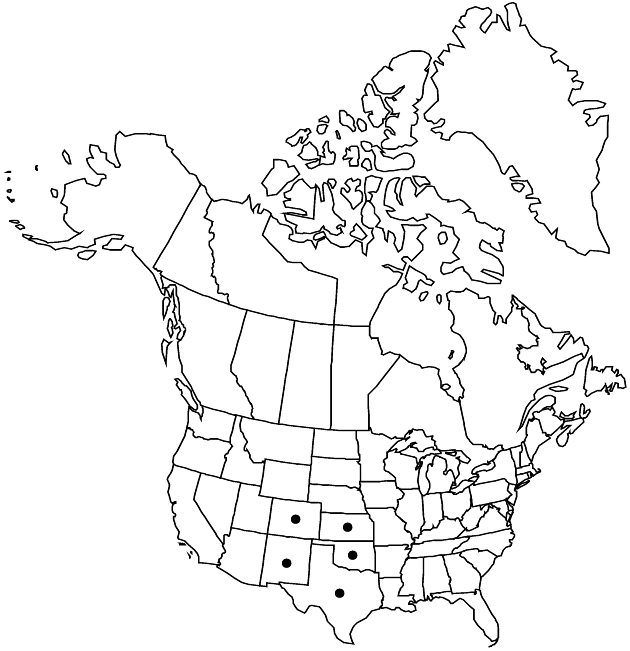Difference between revisions of "Psilostrophe villosa"
Man. Fl. N. States, 1006. 1901.
FNA>Volume Importer |
RevisionBot (talk | contribs) m (Bot: Adding category Revised Since Print) |
||
| Line 57: | Line 57: | ||
}}<!-- | }}<!-- | ||
| − | -->[[Category:Treatment]][[Category:Psilostrophe]] | + | --> |
| + | |||
| + | [[Category:Treatment]] | ||
| + | [[Category:Psilostrophe]] | ||
| + | [[Category:Revised Since Print]] | ||
Revision as of 18:41, 25 September 2019
Biennials or perennials (rarely flowering first year), 10–45(–60+) cm. Stems arachno-villous (gray to gray-green). Heads in ± crowded, corymbiform arrays. Peduncles (0.5–)1–3(–5+) mm. Involucres 4–5(–7) mm. Rays (2–)3(–5); laminae 3–4(–6) mm, spreading in fruit. Disc florets 5–8(–12). Cypselae usually glabrous, sometimes gland-dotted; pappi of 4–6 lanceolate to lance-subulate scales 2.5–3+ mm. 2n = 32.
Phenology: Flowering (Mar–)May–Aug(–Oct).
Habitat: Grasslands, limestone soils, gypseous soils, caliche
Elevation: 300–900 m
Distribution

Kans., N.Mex., Okla., Tex.
Discussion
In trans-Pecos Texas, Psilostrophe villosa has been collected within 10 km or so of the Rio Grande; it probably occurs in Mexico. Within 100 km or so of the New Mexico-Texas border, P. villosa and P. tagetina intergrade; B. L. Turner et al. (1988) treated P. villosa as P. tagetina var. cerifera.
Selected References
None.